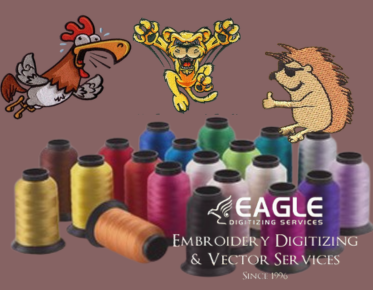How to Digitize a Color Photo for Embroidery
Embroidery digitizing is a fascinating process that transforms a simple color photo into a beautiful embroidered piece. This process involves converting a digital image into a format that an embroidery machine can read and stitch onto fabric. Whether you're a hobbyist or a professional embroiderer, understanding how to digitize a color photo for embroidery can open up a world of creative possibilities.
Understanding the Basics of Embroidery Digitizing
Before diving into the digitizing process, it's essential to understand what embroidery digitizing entails. Essentially, it involves using specialized software to trace the artwork with stitches, converting it into an embroidery file. This file is then used by an embroidery machine to stitch the design onto fabric. The process requires a keen eye for detail and a good understanding of how stitches work to ensure the final product is both accurate and aesthetically pleasing.
Choosing the Right Software
The first step in digitizing a color photo is selecting the right software. There are various embroidery digitizing software options available, each with its own set of features. Some popular choices include Wilcom, Hatch, and Brother PE-Design. These programs allow you to import your photo, adjust the colors, and set the stitch types and directions. It's crucial to choose software that matches your skill level and the complexity of the designs you wish to create.
Preparing Your Photo
Once you've chosen your software, the next step is to prepare your photo. High-quality images with clear details and good contrast work best for embroidery digitizing. You may need to edit the photo to enhance its clarity and adjust the colors to match the threads you plan to use. This step is crucial as it sets the foundation for the entire digitizing process.
Digitizing the Photo
With your photo ready, you can begin the digitizing process. Start by importing the image into your software. You'll need to trace the outlines of the image, defining the areas where different stitch types will be used. This process can be time-consuming, especially for complex images, but it's essential for achieving a high-quality result. Pay attention to the stitch density and direction, as these factors significantly impact the final appearance of the embroidery.
Choosing Stitch Types and Colors
Choosing the right stitch types and colors is a critical part of the digitizing process. Different stitch types, such as satin, fill, and running stitches, create different textures and effects. Experiment with various stitch types to see which ones best suit your design. Additionally, select thread colors that closely match the colors in your photo. This step ensures that the final embroidery closely resembles the original image.
Testing and Adjusting
After digitizing your photo, it's essential to test the design. Use your embroidery machine to stitch a sample on a piece of fabric. This test run allows you to see how the design looks in real life and make any necessary adjustments. You may need to tweak the stitch density, adjust the colors, or refine the outlines to achieve the desired result.
Utilizing Professional Services
If the digitizing process seems daunting, or if you require a high level of precision, consider using professional embroidery digitizing services. Companies like Eagle Digitizing offer expert services to convert your photos into high-quality embroidery files. Their skilled digitizers ensure that every detail is captured accurately, providing a professional finish that might be challenging to achieve on your own.
Exploring Advanced Techniques
For those looking to push the boundaries of embroidery digitizing, advanced techniques such as 3D puff embroidery and sequin embroidery can add depth and texture to your designs. These techniques require specialized knowledge and experience, but they can elevate your embroidery projects to new heights. Consider experimenting with these techniques once you're comfortable with the basics of digitizing.
Future Trends in Embroidery Digitizing
As technology continues to evolve, so too does the field of embroidery digitizing. Emerging trends include the use of AI to automate parts of the digitizing process and the integration of augmented reality to visualize designs before stitching. These advancements promise to make embroidery digitizing more accessible and efficient, opening up new possibilities for creativity and innovation.
Embroidery digitizing is a skill that combines art and technology, offering endless opportunities for creativity. Whether you're digitizing a simple logo or a complex color photo, the process requires patience, precision, and a keen eye for detail. As you continue to explore this craft, consider how new technologies and techniques can enhance your work, and don't hesitate to seek professional assistance when needed. The world of embroidery digitizing is vast and full of potential, waiting for you to explore its depths.



